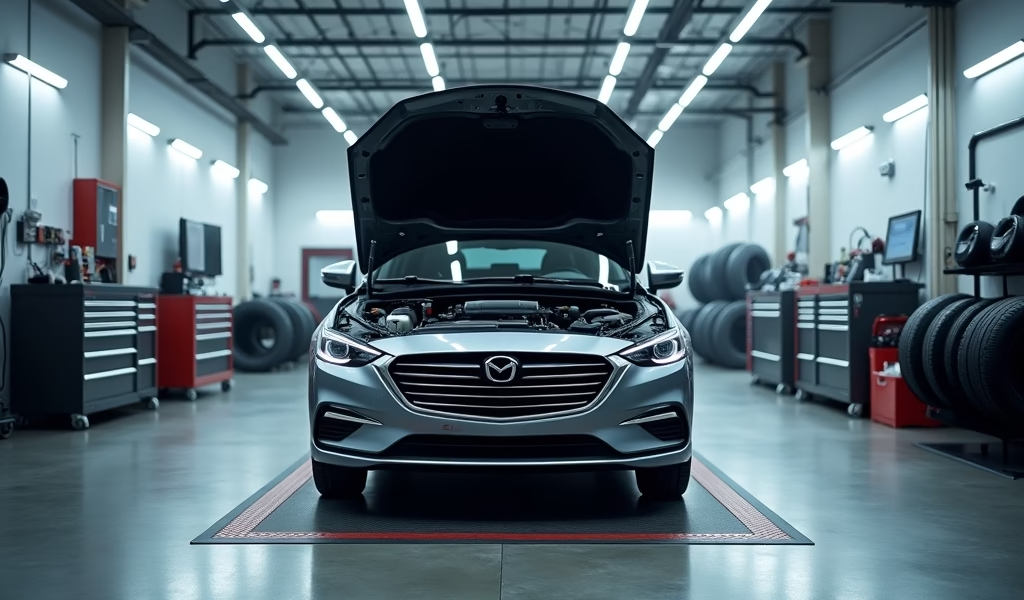Overview
This article provides five essential tips for smart car ownership: researching thoroughly before shopping, setting a realistic budget, getting pre-purchase inspections, following regular maintenance schedules, and learning basic DIY maintenance tasks. The author, an experienced mechanic, emphasizes that proper car buying and maintenance practices can save thousands of dollars and extend vehicle lifespan significantly.
Table of Contents
- Introduction to Buying and Maintaining a Car
- 1. Do Your Homework Before Shopping
- 2. Set a Realistic Budget and Stick to It
- 3. Prioritize Pre-Purchase Inspections
- 4. Follow a Regular Maintenance Schedule
- 5. Learn Basic DIY Car Maintenance
- Conclusion
- Frequently Asked Questions
Introduction to Buying and Maintaining a Car
Looking to buy a car but feeling overwhelmed by the process? You’re not alone. As a mechanic with over 15 years in the field, I’ve seen countless folks drive away in vehicles that weren’t right for them—or worse, needed major repairs just months later. The truth is, how to buy a car is just half the equation; knowing how to maintain it properly is equally important for your wallet and peace of mind.
When you approach car buying with the right knowledge, you can avoid the pitfalls that trap so many shoppers. From shiny paint jobs that hide mechanical problems to upsells on unnecessary warranties, the car-buying process is filled with potential missteps. But don’t worry—I’m here to walk you through it all, from researching your perfect ride to keeping it running smoothly for years to come.
In this guide, I’ll share five essential tips that combine my professional experience with practical car-buying advice to help you make smart decisions. Whether you’re a first-time buyer or looking to upgrade your current vehicle, these strategies will save you both money and headaches down the road. Let’s get started!
1. Do Your Homework Before Shopping
Before you ever set foot on a dealership lot, arm yourself with knowledge. The internet has revolutionized car buying, putting valuable information at your fingertips. Start by identifying your needs versus wants—a distinction many shoppers fail to make. Do you need four-wheel drive for snowy conditions, or do you just like the look of SUVs? Will you regularly carry passengers, or is that third row of seats just an occasional need?
Once you’ve narrowed down your requirements, research specific makes and models that meet your criteria. Websites like Consumer Reports, Edmunds, and Kelly Blue Book offer detailed reviews, reliability ratings, and pricing information. Don’t just look at the current year’s model—check how vehicles have performed over time.
One often overlooked resource is owner forums and social media groups. These communities provide real-world insights you won’t find in professional reviews. They’ll tell you about that glitchy infotainment system or the transmission that tends to fail at 60,000 miles. As a mechanic, I’ve fixed countless issues that are common knowledge among owners but rarely mentioned in glossy brochures.
Create a shortlist of 3-5 vehicles that meet your needs and have solid reliability records. Then, dig deeper into specific issues for each model. According to J.D. Power’s vehicle dependability studies, even top-rated cars have known problem areas. Knowing these in advance gives you negotiating leverage and helps you budget for potential future repairs.
Finally, research fair market values so you know what you should pay. Tools like TrueCar show what others in your area paid for similar vehicles. Remember, knowledge is negotiating power when it comes to how to buy a car.
2. Set a Realistic Budget and Stick to It

From my years in the garage, I’ve seen too many folks struggling with car payments they can barely afford. Let me be straight with you: a car is typically a depreciating asset, not an investment. The old rule of thumb that your car payment shouldn’t exceed 15% of your monthly take-home pay still holds water. If you’re buying used, aim for even less—maybe 10%—so you have room in your budget for maintenance and repairs.
But here’s what salespeople won’t tell you: the purchase price is just the beginning. Factor in insurance, which can vary wildly depending on the model and your driving history. Annual registration fees, property taxes (in some states), and fuel costs also add up quickly. And don’t forget maintenance—even reliable vehicles need regular care.
When calculating your budget, use the total cost of ownership, not just the monthly payment. Dealers love to focus solely on payments, stretching loans to 72 or even 84 months to make expensive vehicles seem affordable. This is a trap! Longer loans mean you’ll likely be “underwater” (owing more than the car is worth) for years.
Here’s a quick breakdown of what to include in your car budget:
- Monthly payment (loan or lease)
- Insurance premiums
- Fuel costs (based on your typical driving habits)
- Maintenance (about $100/month for newer cars, more for older ones)
- Registration and taxes
- Contingency fund for unexpected repairs
Pre-arrange financing through your bank or credit union before visiting dealerships. This gives you leverage and a clear budget ceiling. When I bought my last truck, I walked in with pre-approved financing at 3.9%, which prompted the dealer to offer 2.9% to earn my business.
Remember, the best negotiators are always willing to walk away. If the numbers don’t work for your budget, don’t rationalize the purchase—there’s always another car out there that will fit your needs and your finances.
3. Prioritize Pre-Purchase Inspections
Here’s where my expertise as a mechanic becomes crucial: never—and I mean never—buy a used car without a thorough pre-purchase inspection. Even brand new cars can have issues from the factory. I’ve seen it all, from hidden accident damage to engines running on borrowed time. That $100-150 inspection fee can save you thousands in future repairs.
When selling, dealers often do the minimum necessary reconditioning to make a car presentable. Shiny paint and a detailed interior can hide a multitude of problems. That’s why you need an independent set of eyes evaluating the vehicle’s true condition.
For used cars, a comprehensive used car inspection checklist should include examining:
- Engine compression and overall performance
- Transmission operation through all gears
- Suspension components for wear and proper function
- Electrical systems, including all accessories
- Undercarriage for rust, damage, or fluid leaks
- Brake condition (pads, rotors, lines)
- Tire wear patterns (which can indicate alignment issues)
- Evidence of previous accidents or poor repairs
If the seller refuses to allow an inspection, walk away immediately—they’re hiding something. For online purchases or cars from distant sellers, services like Lemon Squad can dispatch inspectors nationwide. The Consumer Reports guide to avoiding lemons also offers excellent advice on this topic.
Always request service records, too. A vehicle with documented maintenance history is typically a safer bet than one with a mysterious past. In my shop, I can often tell when a car has been neglected just by checking basic fluid conditions and filter states.
For new cars, an inspection might seem unnecessary, but a thorough test drive and careful examination can reveal factory defects or damage that occurred during transport. Don’t be rushed through this process—you’re making a major purchase and deserve time to evaluate it properly.
4. Follow a Regular Maintenance Schedule
Once you’ve purchased your car, maintaining it properly is the best way to protect your investment. The owner’s manual is your bible here—not what your buddy recommends or what the quick-lube place suggests. Manufacturers design specific maintenance schedules based on extensive testing and engineering knowledge.
Modern vehicles are more reliable than ever, but they still need regular care. Skipping maintenance to save money is penny-wise but pound-foolish. That $60 oil change you put off could lead to a $5,000 engine replacement down the road. I’ve rebuilt too many engines that failed prematurely due to maintenance neglect.
Create a maintenance calendar based on your owner’s manual, considering both time and mileage intervals. Most modern cars will also remind you when service is due. Here’s a simplified maintenance schedule that works for most vehicles:
- Every 3-6 months or 3,000-7,500 miles: Oil and filter change (follow your manual’s recommendation for synthetic vs. conventional oil intervals)
- Every 15,000-30,000 miles: Air filter replacement
- Every 30,000 miles: Transmission fluid service (for most automatics)
- Every 60,000 miles: Coolant replacement
- Every 60,000-100,000 miles: Spark plugs and ignition components
- Every 90,000-100,000 miles: Timing belt (if equipped)
Keep detailed records of all maintenance performed. This not only helps you stay on schedule but also increases your car’s resale value. Digital apps like CarFax’s myCARFAX or simply a notebook in your glove compartment can work.
Don’t ignore warning signs between scheduled services. Strange noises, warning lights, or performance changes should be addressed promptly. Small problems rarely resolve themselves and usually become more expensive repairs if ignored. As AAA’s maintenance guidelines point out, regular check-ups can extend your vehicle’s life by years.
5. Learn Basic DIY Car Maintenance

You don’t need to become a certified mechanic, but learning a few basic maintenance tasks can save you hundreds of dollars annually. Plus, it connects you with your vehicle, helping you spot potential issues before they become serious problems.
Start with these beginner-friendly maintenance tasks:
- Checking and maintaining proper tire pressure
- Replacing windshield wipers
- Changing air filters
- Checking and topping off fluid levels
- Replacing bulbs
- Cleaning battery terminals
YouTube has transformed DIY car maintenance, with detailed tutorials for most common tasks on virtually every make and model. Just search “[your car model] + [the task]” and you’ll likely find step-by-step guidance. I often recommend channels like ChrisFix and Scotty Kilmer to my customers who want to learn more about their vehicles.
Invest in some basic tools: a quality jack and jack stands, a set of socket wrenches, screwdrivers, pliers, and a flashlight will handle most beginner projects. The initial investment might be $100-200, but you’ll recoup that quickly. For example, a shop might charge $25-50 to replace a cabin air filter that costs $15 and takes five minutes to change yourself.
Understanding the basics also helps when you do need professional service. You’ll be able to explain problems more accurately and understand what the mechanic is recommending. This knowledge often prevents unnecessary repairs or upsells.
However, know your limits. Modern vehicles have complex computer systems and specialized components. Leave major repairs, diagnostic work, and safety-critical systems (like brakes) to professionals if you’re unsure. No amount of saved money is worth compromising safety.
Conclusion
Buying and maintaining a car doesn’t have to be intimidating. With thorough research, a realistic budget, careful inspection, regular maintenance, and some DIY know-how, you can enjoy years of reliable transportation without breaking the bank. Remember that how to buy a car is just the beginning—how you care for it determines its longevity and your overall ownership costs.
As a mechanic, I’ve seen vehicles with 300,000+ miles running strong because their owners followed these principles. Conversely, I’ve also seen relatively new vehicles headed to the junkyard due to neglect or poor purchasing decisions. The difference often comes down to the owner’s approach rather than the vehicle itself.
Take your time, trust your research, and don’t let emotions or sales pressure rush you into decisions. A vehicle purchase represents one of your largest investments, second only to housing for most people. Treat it with appropriate care and consideration, both during purchase and throughout ownership.
By following these five tips, you’ll not only save money but also enjoy a more satisfying relationship with your vehicle. Happy driving!
Frequently Asked Questions
What’s the best time of year to buy a car?
Late December (when dealers are trying to meet year-end quotas) and the end of any month are typically best for discounts. Model year changeovers (August-October) also offer good deals on outgoing models.
Should I buy new or used?
Used cars typically offer better value since new vehicles depreciate 20-30% in the first year. However, new cars come with full warranties and no hidden problems, which might be worth the premium for some buyers.
How much should I put down when buying a car?
Aim for at least 20% down to offset initial depreciation and secure better loan terms. This helps ensure you won’t be “underwater” on your loan if you need to sell the vehicle early.
Is leasing better than buying?
Leasing typically means lower monthly payments but no equity building. It’s best for those who enjoy driving newer vehicles and don’t exceed mileage limits, while buying makes more financial sense for long-term ownership.
How can I tell if a used car has been in an accident?
Look for mismatched paint, uneven panel gaps, or signs of overspray. A vehicle history report and professional inspection are essential, as modern repair techniques can make accident damage difficult to detect visually.


Pingback: Process of buying a car: Top 5 Care Tips - knowsyourcar.com
Pingback: Process of Buying a Car Online: 5 Tips - knowsyourcar.com